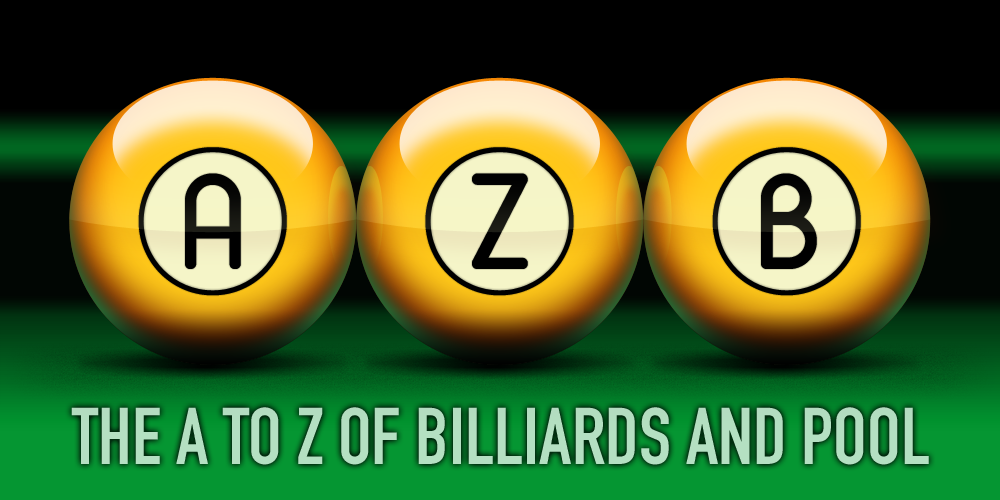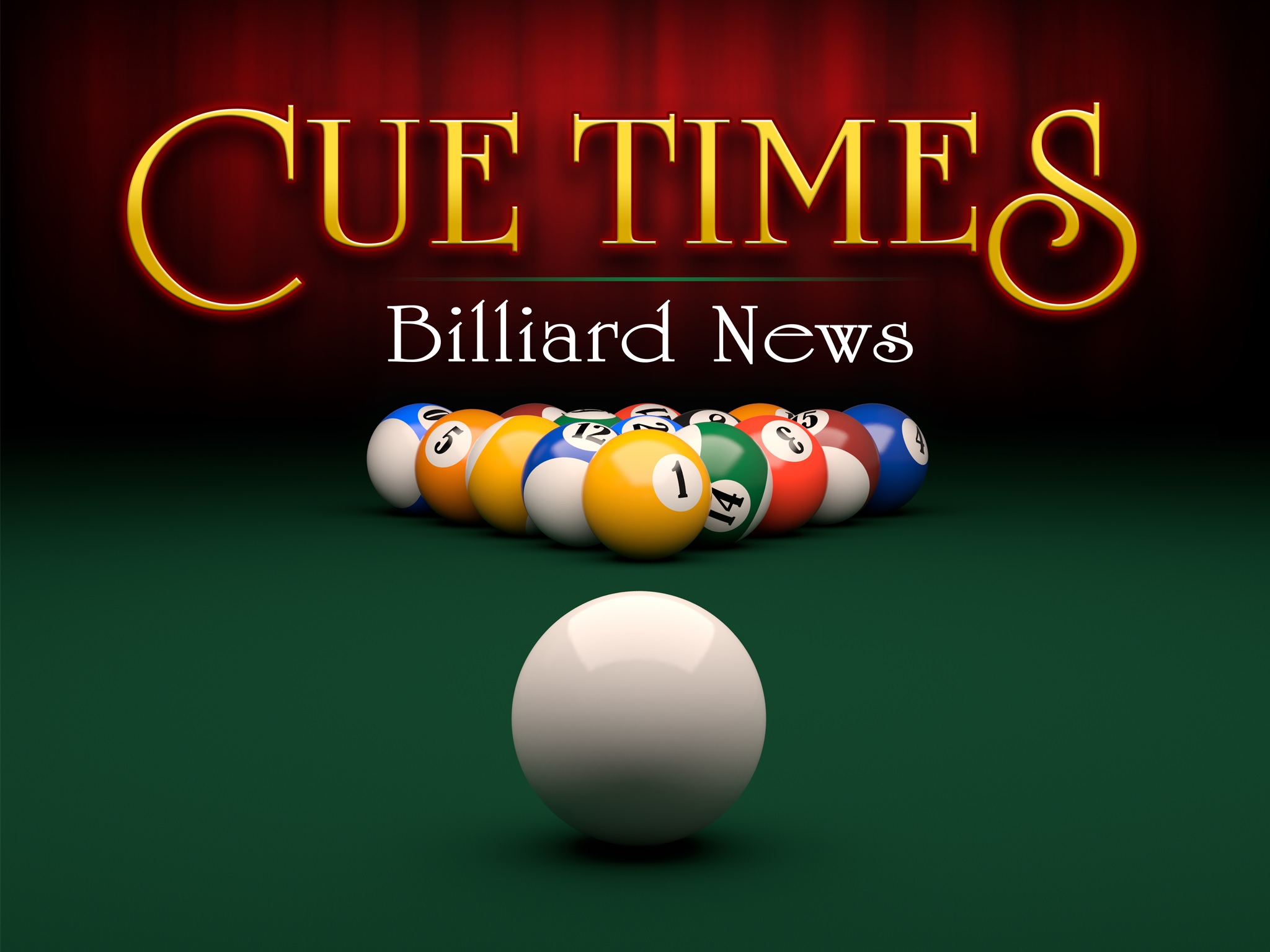I. Format
1. Tour membership is always free.
2. Each Tour event is $1,000 added.
3. The Tour features 9-ball and 8-ball events.
4. The entry fee for the amateur division is $25 ($5 admin fee). The entry fee for the open division is $35 ($10 admin fee). One, open division tournament, which may be 9-ball or 8-ball, the entry is $45 ($12.50 admin fee).
5. Each division is limited to 64 players, unless otherwise indicated on the event flyer.
6. Races for the amateur 9-ball division are 5/5. Races for the open 9-ball division are 6/6. Races for an open 8-ball division are 3/3. Races may be altered at the discretion of the tournament director.
7. All events are two days, double elimination, with true double elimination finals.
8. Registration is on-site, Saturdays, 11:00 a.m. to 12:30 p.m. A player may be “pre-listed” by contacting the tournament director in advance of any event, which guarantees that player a spot. Pre-listed players must arrive at the pool room by 11:00am on Saturday to check-in and pay, or risk losing their spot. Players may prepay via PayPal by sending their entries “friends and family”, to lonestartour@gmail.com. Prepaid players may arrive at 12:00 p.m.
9. Amateur players may participate in both divisions. The tournament director will work around any conflicting matches.
10. A player auction for each division is held on Saturdays, beginning at 12:30pm. Player attendance is mandatory.
11. Following the final player auction, the draws will commence, and matches will be called.
12. The pool room opens for free practice at 10:00am on Saturday, and 11:00am on Sunday, unless otherwise indicated on the event flyer.
13. Players who earn their way to Sunday must be at the pool room by 12pm, unless otherwise indicated on the event flyer.
14. Tournament payouts cover one quarter of the field, and auction payouts, typically, one eighth.
15. It is the goal of the Tour to have all match-play conclude by 9:00pm, each day.
II. Tournament Rules – 9-Ball
1. Game. The game of 9-ball is played with pool balls numbered one through nine, pocketed in rotation. The first player to legally pocket the 9-ball wins. A player does not have to call the shot, or the pocket, as long as the player legally pockets the ball(s). If a player pockets any ball on a legal shot, he remains at the table for another shot, and continues until he misses, fouls, or wins the game by pocketing the 9-ball. Players do not have to call safeties, shots, balls, or pockets.
2. Break. Flip a coin to determine who breaks first. Winner breaks. Players must break with the cue ball completely behind the head string, striking the head ball (one-ball), first. After the break, if the 9-ball is pocketed in either of the bottom two corner pockets, it is spotted and play resumes. If the 9-ball is legally pocketed anywhere else on the table, it is considered a “win”. The player breaking must pocket at least one object ball to continue his inning at the table. The minimum required for a legal break, is driving any four balls to a rail. Soft breaking is not permitted.
3. Racking. Players will rack their own rack. The one-ball is racked on the spot, with the 9-ball in the middle, and the two-ball in the back. The other balls must be placed in random order. No pattern racking.
4. Roll Out/Push Out. Following the break, a player may be unable to strike the lowest numbered ball, first, as it may be hidden by impeding balls. This player may elect to “roll out” or “push out”. The minimum requirement for a roll out shot is the tip of the cue must make contact with the cue ball. When a player is going to roll out, the opponent must be notified. Following the roll out, the incoming player has the option to pass it back. At that point, the person who broke must take the shot.
5. Fouls. A foul will result in ball-in-hand for the incoming player.
a. Cue ball scratches
b. Jumping balls off the table
c. Pushing through the cue ball
d. Disturbing the cue ball in any way
e. Moving two or more object balls in play
f. A moved ball impedes the path of the cue ball
g. Failing to strike the lowest numbered ball, first
h. Failing to drive one ball to a rail, following execution
i. Moving an impeding object ball; when a player is cuing over one or more balls, and the player touches one of those balls, before, during, or after the shot, it is a foul
6. Spotting the 9-Ball. The only ball, ever spotted, is the 9-ball. When the 9-ball is pocketed during the commission of a foul, or roll out shot, the opposing player will replace the 9-ball on the spot, and continue play.
7. Three Fouls. Three consecutive fouls is a loss of game. A player must verbally notify his opponent when they have committed two, consecutive fouls, in order for the third foul to be counted.
8. Replacing a Moved Ball. If a player inadvertently moves one object ball, and it is not deemed a foul, their opponent has the option to replace the ball (where they think it was), or leave it where it is.
9. Calling a Referee. If a player believes his opponent may foul during the execution of a shot, he must notify his opponent, and call a referee to the table; official referee, tournament director, or a person both players agree on. Their call will stand. If no one is called, the shot will go to the shooter.
10. Scoring. Players are responsible for keeping their own score, in the scoring form provided by the Tour; coins, score keepers, or score cards. Games or sessions will not be replayed. The score kept by each player at the table, stands.
11. Forfeits. If a player is called more than three times to a match table, he will be forfeited. Players may not leave the building during match play unless they check in at the tournament desk, first.
12. Grace Period. A fifteen minute grace period is only in effect for designated match times.
13. Slow Play. A warning will be issued to any player who is intentionally, or otherwise, holding up play. Penalties will be assessed at the discretion of the tournament director. A thirty-second shot-clock may be implemented, at any point, during the event.
14. Breaks. Players are allowed one five minute break per match, to be taken in between games. Players may take their break at the same time, but it will be counted as a break for each player.
15. Table Assignments. Players are required to play on their assigned match table. If a player is assigned to the live stream table, he must play on that table, or forfeit his match.
III. Tournament Rules – 8-Ball (9-Ball Rules 8. – 15. also apply)
1. Game. The game of 8-ball is played with pool balls numbered one through fifteen. The first player to pocket all striped balls, or all solid balls, and legally pocket the 8-ball, wins. A player does not have to call the shot, but he MUST call the ball and the pocket, or declare a “safety” (see rule 4.)
2. Break. Flip a coin to determine who breaks first. Players will alternate the break. Players must break with the cue ball completely behind the head string. On a legal break, one object ball must be pocketed or four balls driven to a rail. If a player scratches on the break, the incoming player has ball-in-hand anywhere on the table. If the 8-ball is pocketed on the break, and it is not noticed until after another shot has been taken, the game will be replayed with the player who broke the game, breaking again.
If you pocket the 8-ball on the break and do not foul, you may:
a. have the 8-ball spotted and accept the table in position;
b. re-rack the balls and break again.
If you pocket the 8-ball on the break and foul, your inning ends. Your opponent may:
a. have the 8-ball spotted and take ball in hand anywhere on the table;
b. re-rack the balls and break.
3. Racking. Players will rack their own rack. The head ball is racked on the spot. A striped ball and a solid ball shall be placed in each bottom corner of the rack. The 8-ball shall be placed in the middle. The other balls may be placed in random order
4. Designating Balls. Following the break, provided a ball is pocketed and no foul is committed, the table is still open and the player may designate stripes or solids by legally pocketing a ball on the second shot after the break. When the table is open, all object balls except the 8-ball are legal object
balls. For combination shots, a ball of one group may be contacted first to pocket a ball
of the other group. The 8-ball may be part of such a combination if it is not the first ball contacted by the cue ball.
5. Losing On the 8-Ball. If a player pockets the 8-ball prematurely, or pockets the 8-ball and fouls, it is a loss of game. If a player is shooting the 8-ball, and commits a foul without pocketing the 8-ball, it is not a loss of game, and the incoming player receives ball-in-hand. If a player jumps the 8-ball off the table, any time other than the break, it is a loss of game.
6. Safeties. A “safety” shot should be called when a player intends to execute a defensive shot. A defensive shot may include pocketing a ball. If a player does not declare a safety, and pockets one of his balls in an obvious pocket, he must shoot again.
7. Fouls. A foul will result in ball-in-hand for the incoming player.
a. Cue ball scratches
b. Jumping balls off the table
c. Pushing through the cue ball
d. Disturbing the cue ball in any way
e. Moving two or more object balls in play
f. A moved ball impedes the path of the cue ball
g. Failing to drive one ball to a rail, following execution
i. Moving an impeding object ball; when a player is cuing over one or more balls, and the player touches one of those balls, before, during, or after the shot, it is a foul
8. Spotting Balls. The only ball ever spotted is the 8-ball. All object balls jumped off the table, or pocketed, stay down.
9. Stalemate Games. If the tournament director determines that the table is in a position such that any attempt to pocket or move a ball will result in loss of game on that shot, or that the game is not progressing because the position of the table has not significantly changed through three consecutive innings by each player, the tournament director will declare a stalemate and the game will be replayed with the player who broke that game, breaking again.
IV. Player Etiquette
1. Players must remain seated in their chair while their opponent is at the table.
2. Players must use the equipment provided by the Tour.
3. When permitted, smoking is allowed during matches, however, cigarettes or smoking devices are not allowed at the pool table. Blowing smoke over the table is not permitted. Players may also drink alcoholic beverages during their matches.
4. Alcohol, tobacco, or vaping products should never be visible to viewers, when playing on the live stream table.
5. Ear buds, set on low volume, worn for the purpose of listening to music, are acceptable during match play. Players must be able to hear their opponents.
6. Unsportsmanlike or disorderly conduct, of any kind, will not be tolerated. See Code of Conduct.
7. Cell phones must be turned off, or switched to “silent”, and stowed away during match play.
8. The match area is for players only, and is off-limits to spectators, friends, and significant others.
9. Players shall not speak disparagingly about the Tour, its members, or affiliates, at any time, in any forum, whether on-site, in public, or on social media. See Code of Conduct.
V. Dress Code
We are looking for a clean and neat appearance.
Acceptable: Long shorts (reach the knees), blue jeans, dockers, dress pants, workout-wear; t-shirts, dry-fit shirts, polos; tennis shoes, sandals with backs, dress shoes, boots
Unacceptable: Shorts above the knee, t-shirts with graphic designs, muscle shirts, tank tops, bandanas, torn clothing, holes in clothing, flip flops
VI. Code of Conduct
Players must not make, or cause to be made, any statements (whether verbal or in writing), or take or cause others to take action which may, in the opinion of the tournament director, bring that member, the Poison Lone Star Billiards Tour, its agents, or the sport of billiards, into disrepute. Players shall not address criticism of fellow players, tournament personnel, equipment, sponsors, or venue, or any other Tour agents, to fellow members, the public, press, or social media. If a player wishes to issue a complaint, they must address a tournament director, in a discreet and respectable manner. The official tournament director has the sole discretion, to determine whether a violation has taken place, and assess penalties. The following violations warrant immediate attention:
a. Any use of illegal drugs
b. Acts of aggression
c. Public drunkenness
d. Unsportsmanlike conduct (includes intentional sharking)
e. Abusive or profane language
f. Abuse of equipment
g. Public disagreements
h. Non-compliance with dress code
i. Disparaging remarks with respect to the Tour or its agents
VII. Media
The Tour will secure an official photographer for each event, and provide live streaming, free to at-home viewers, whenever possible. Cameras with interchangeable lenses, other than those of the official photographer, will not be permitted at any event. Video recording and live streaming are not permitted without the expressed consent of the Tour.
VIII. Compliance
By remitting an entry fee, the player agrees to abide by all of the aforementioned format and rules listed on this page, and the release of their media rights for Tour advertising and marketing purposes, as stated in sections I through VII.











